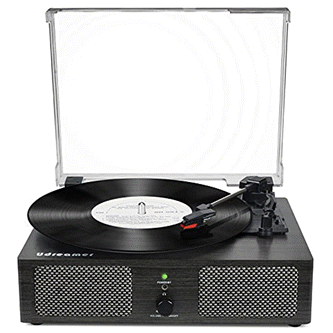2024-11-26 15:49:00
phys.org

Scientists around the world rely on ocean monitoring tools to measure the effects of climate change. Researchers at the University of Alaska Fairbanks and their industry partners have advanced the technology available to measure carbon dioxide in the ocean. Their design, published in the journal Ocean Science, is now available to the scientific community.
During the past six years, a team from the UAF International Arctic Research Center and private companies developed a way to equip an unmanned, underwater vehicle called a Seaglider with a sensor that monitors carbon dioxide. The sensor communicates with a satellite to provide high spatial and temporal resolution data for weeks at a time. This continuous flow of data gives scientists a clear picture of ocean chemistry, but it took some ingenuity to bring the project together.
IARC’s industry partners—Advanced Offshore Operations and 4H JENA Engineering—made the Contros HydroC sensor lighter and more compact so it would fit the Seaglider.
The sensor is still larger and demands more power than those typically used on a Seaglider. So the team had to carefully account for its effects upon buoyancy and adjust by using weights and 3D-printed materials.
Monitoring carbon dioxide levels in the ocean creates the information needed to develop climate change adaptation plans, said Claudine Hauri, an oceanographer on the team and IARC’s deputy director.
Carbon dioxide, released when humans burn coal, oil and gas, is called a greenhouse gas because it traps heat in the atmosphere and contributes to climate warming. The ocean has slowed the effects of climate change by absorbing about a third of carbon dioxide emissions since the industrial revolution began. But that has led to ocean acidification.
“When carbon dioxide from the atmosphere dissolves into the ocean, it decreases the pH, leading to ocean acidification,” Hauri said. “These conditions make it difficult for some marine organisms to build and maintain their shells and can even affect fish.”
After their technological success with the carbon dioxide sensor, the team decided to monitor a different greenhouse gas—methane. They equipped a Seaglider with a methane sensor, and the addition is now in the testing phase.
Methane doesn’t stay in the environment as long as carbon dioxide, but it traps more heat. Humans produce roughly 60% of methane emissions through agriculture, waste and fossil fuel industries. The rest occurs naturally, including in the ocean where it bubbles to the surface from the deepest parts of the Earth.
Frozen methane hydrates are trapped inside subsea permafrost and mixed with sediments across the deep ocean floor. Warming waters and rising temperatures destabilize the hydrates and release the methane into the water column. Once there, microorganisms can turn methane into carbon dioxide, potentially triggering ocean acidification events.
Hauri said there’s one more challenge that the Seaglider team wants to overcome—the extreme conditions in waters around Alaska.
“The Seaglider we’re using isn’t really made for Alaska’s coastal oceans,” she said. “We’re looking for an autonomous underwater vehicle that can withstand the elements. Then we’ll integrate it with the carbon dioxide and methane sensors to collect data from some of the most remote spots on Earth, furthering our understanding of chemical processes in the ocean.”
More information:
Claudine Hauri et al, Expanding seawater carbon dioxide and methane measuring capabilities with a Seaglider, Ocean Science (2024). DOI: 10.5194/os-20-1403-2024
Provided by
University of Alaska Fairbanks
Citation:
Scientists enhance Seaglider technology to measure carbon dioxide (2024, November 26)
retrieved 26 November 2024
from https://phys.org/news/2024-11-scientists-seaglider-technology-carbon-dioxide.html
This document is subject to copyright. Apart from any fair dealing for the purpose of private study or research, no
part may be reproduced without the written permission. The content is provided for information purposes only.
Enjoy the perfect blend of retro charm and modern convenience with the Udreamer Vinyl Record Player. With 9,041 ratings, a 4.3/5-star average, and 400+ units sold in the past month, this player is a fan favorite, available now for just $39.99.
The record player features built-in stereo speakers that deliver retro-style sound while also offering modern functionality. Pair it with your phone via Bluetooth to wirelessly listen to your favorite tracks. Udreamer also provides 24-hour one-on-one service for customer support, ensuring your satisfaction.
Don’t miss out—get yours today for only $39.99 at Amazon!
Source Link
Support Techcratic
If you find value in Techcratic’s insights and articles, consider supporting us with Bitcoin. Your support helps me, as a solo operator, continue delivering high-quality content while managing all the technical aspects, from server maintenance to blog writing, future updates, and improvements. Support Innovation! Thank you.
Bitcoin Address:
bc1qlszw7elx2qahjwvaryh0tkgg8y68enw30gpvge
Please verify this address before sending funds.
Bitcoin QR Code
Simply scan the QR code below to support Techcratic.

Please read the Privacy and Security Disclaimer on how Techcratic handles your support.
Disclaimer: As an Amazon Associate, Techcratic may earn from qualifying purchases.



































































































